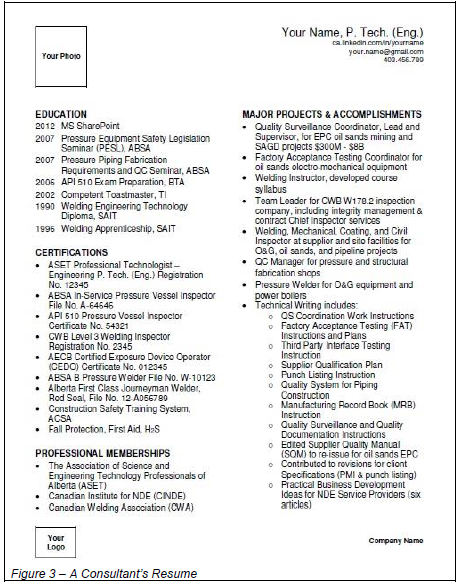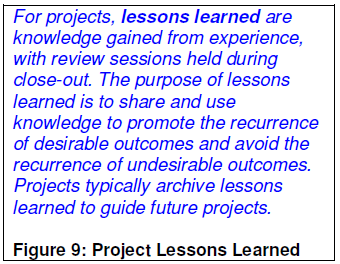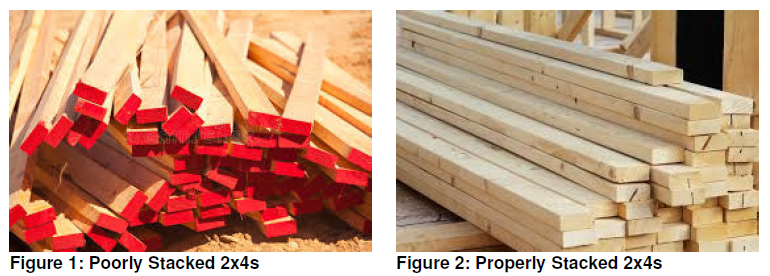Stacking Lumber: What My Father Taught Me About the Importance of Quality Work
Like lessons from most fathers, the advice I received from my father was as influential as it was pervasive. The knowledge he passed to me affects the way I approach my work, even today and it became ubiquitous. To a boy, nothing is more potent than the sage wisdom of a caring father. The earliest memory I have of his influence as a worker was a lesson he taught me when I was 10. His lesson was disguised as many lessons – and I still remember and work by every one of them. He learned this lesson from his father.
It was my first lesson about the importance of using good workmanship to achieve quality work.
Related: The Key to Project Success.
I spent my childhood and youth growing up on a farm about 100 km (50 mi.) east of Calgary, Alberta in Canada, which was homesteaded by my grandfather Otto Christensen in the 1910s (see Figure 3). His family farm produced dairy products, grain, and livestock (see Figure 4).


In the mid 1950s, my father Oliver Christensen continued the family farming tradition. Our farm (see Figure 5) produced grain (e.g., barley, canola, flax, mustard, and wheat). My father did most of the work but sometimes hired seasonal help. When I was old enough, my father employed me (see Figure 6) instead of hiring others.


At first, my pay was about $0.75/h. About two years later, I remember being delighted with my first raise – this brought my pay up to $1.00/h. That was awesome! But like most youth, I was distracted often and preferred not to work. I would finish my work quickly so I could enjoy childhood pursuits more often. After all, a boy needs to buy only so much licorice!
One day, my father asked me to gather and stack lumber for storage. It seemed to be an easy job, so he let me work unsupervised. Because I wanted to finish the work quickly, I tossed the lumber into a pile on the ground instead of stacking it neatly. When I had finished my work, the pile looked like the poorly-stacked lumber in Figure 1. It was a mess, but I finished my work quickly. I thought I had done a good enough job.
Later, my father inspected my work (performed quality control). He determined that I had employed poor workmanship that resulted in a poor quality work. He explained that my stacking method would eventually cause the lumber to become damaged – and even unsalvageable. I was unaware that my approach to the work was not only self-defeating but could also waste resources (e.g., the lumber, and the labour required to incorrectly stack it). So, patiently, my father asked me to do it again. The lumber needed to be unstacked and then restacked properly.
At first, I was annoyed about having to spend time on rework. My father explained how there is a correct and an incorrect way to complete every job, including simple jobs – like stacking lumber.
One of his legacies to me is: Use good workmanship to yield quality work.
My father went on to explain that lumber, when stacked incorrectly, will:
- Be in contact with the dirt and exposed to moisture, increasing its susceptibility to damage;
- Become warped from the elements and therefore difficult or impossible to use as building material; and,
- Look untidy and unprofessional, which is a sign of poor workmanship.
From this simple experience I learned many, enormously helpful, far-reaching lessons that continue to guide my professional and personal life.
Lesson Learned #1: Poor workmanship creates poor results.
Because I applied poor workmanship, the original task had ballooned into two additional tasks: unstack the incorrectly stacked lumber and re-stack the lumber correctly. My incorrect stacking of lumber was a complete waste of time. Because I did not do the work correctly the first time, I needed to spend at least twice as much time to complete the job correctly the second time. In total, this tripled the amount of required time to complete the work.
Poorly managed companies work like this today: there is never time to do it correctly, but there is always time to do it again.
Lesson Learned #2: The best way to perform a task is the correct way, ensuring that it is only performed once.
Clearly, I had no idea how to stack lumber correctly. For a boy of 10, this is not surprising. Fathers are made for this sort of thing. After criticizing my work, my father showed me how to stack the lumber correctly and then supervised my rework.
First, he taught me to place boards laterally on the ground every 2 ft (0.6 m) and shore them up to provide a flat, level surface to stack the lumber. Next, he showed me how to stack the lumber by placing bigger and longer pieces on the bottom, and smaller pieces on top. I learned that short pieces could be laid out end to end, to simultaneously keep the height of the stack low and avoid causing the pile to fall over.
The Spanish proverb – if a job is worth doing, it is worth doing well – was never more appropriate.
Companies that do not employ good workmanship haphazardly throw lumber into a pile at their own expense and peril.
Lesson Learned #4: A quality job takes planning and preparation.
After I restacked the lumber, it looked like the lumber in Figure 2. By employing good workmanship, I produced a quality job: the lumber would be preserved and remain suitable for future use.
It did take extra time to consider board placement, and to layout and shore up the lateral boards. Nonetheless, the extra time was worth it. It made me realize that completing the job correctly is more important than its duration or who performs the work (e.g., labourer, professional, or tradesperson).
Successful companies start with the end in mind and demand carefully stacked lumber (i.e., organized deliverables and processes) for good reason.
Lesson Learned #5: Regardless of a job’s importance or size, good workmanship is important.
Good workmanship is scalable – from small jobs (e.g., sweeping the floor) to megaprojects (e.g., crushing 120 t of ore per hour at an oilsands mega mine). Good workmanship is the degree of art, quality, or skill exhibited in a finished product. In many cases, lack of good workmanship is obvious – even to an untrained eye (see Figure 1). An untidy shop implies poor workmanship to almost everyone who enters it.
Companies that do not value good workmanship usually also have a problematic reputation that haunts them. Potential customers ask: Why would I work with a company that uses poor workmanship? What else do they do incorrectly?
Lesson Learned #6: A quality job looks well-done and shows pride of workmanship.
My father was not angry about my poor workmanship. I do not remember exactly what he said, but he was not pleased. Like a good father (or good foreman), he explained how to correctly perform the work in detail … guiding me by identifying my errors and leading by example. Supervision is necessary for instruction and quality control, especially for inexperienced personnel.
Completing the rework was difficult because I had made the job more labour-intensive and extended its duration. Nonetheless, I was proud of my accomplishment. The lumber was properly stacked. And it looked great! When I realized how good the stack of lumber looked, I felt pride of workmanship for the first time in my life. This is a gift only a father could give.
Successful companies provide guidance (i.e., coaching and mentoring) to inexperienced and new personnel to mitigate unnecessary risk.
Lesson Learned #7: Everyone makes mistakes, so information, patience, and practice are necessary to develop competency and transfer knowledge.
My father’s advice has been extremely useful throughout my career. I have applied these lessons in many professional roles that span decades:
- 2018 – today: Author, entrepreneur, and project success coach, by founding the Knowledge Transfer (KT) Project
- 1998 – today: Supplier quality surveillance coordinator, by performing quality surveillance, and preparing and reviewing project documents
- 2003 – 2009: Instructor, by preparing a syllabus and teaching the continuing education course Metalworking for Artists (see Figure 7)
- 1991 – 1998: Mechanical and welding inspector, by examining equipment and materials, and reviewing documents
- 1990 – 1991: Non-destructive examination technician, by examining equipment, materials, and weldments
- 1988 – 1990: Student, by earning a Welding Engineering Technology (WET) diploma, graduated with a 3.68 GPA and honours diploma, and awarded the Nova corporate scholarship.
- 1981 – 1988: Welder, by making metal equipment or structures and weldments.

Thanks to my father, I learned at an early age that only when a job is completed using good workmanship can it be considered quality work. This is true of any job, regardless of its importance or size, or who performs the work. I keep these lessons in mind with any work I do today (see Figure 8), the same as when I was that 10-year old boy.


Note
This article was originally published on LinkedIn 14-May-20 https://www.linkedin.com/pulse/stacking-lumber-what-my-father-taught-me-importance-christensen-ret/.
About the Author
Roy O. Christensen is a Welding Engineering Technologist who has over 35 years’ experience with oil and gas, pipelines, and other projects. He has authored countless instructions, manuals, plans, proposals, reports, specifications, and other documents that continue to drive success for many projects. He is the founder of the KT Project, which saves organizations significant money and time, by providing key resources to leverage expert knowledge transfer for successful project execution.
Contact
- Roy O. Christensen
- [email protected]
- +1 403.703.2686
Figures
- Poorly Stacked 2x4s, https://www.dreamstime.com/photos-images/stack-2×4-studs.html
- Properly Stacked 2x4s, http://blog.heritagebiologics.com/is-specialty-pharmacy-a-stack-of-2x4s
- Otto Christensen, 1925
- Otto Christensen & Sons (from the left – Deward, Oliver, Bill, and Otto), 1943
- Roy Christensen, 1972
- Christensen Family Farm, 1973
- Roy Christensen, 2005
- Roy Christensen, 2019
- Project Lessons Learned

